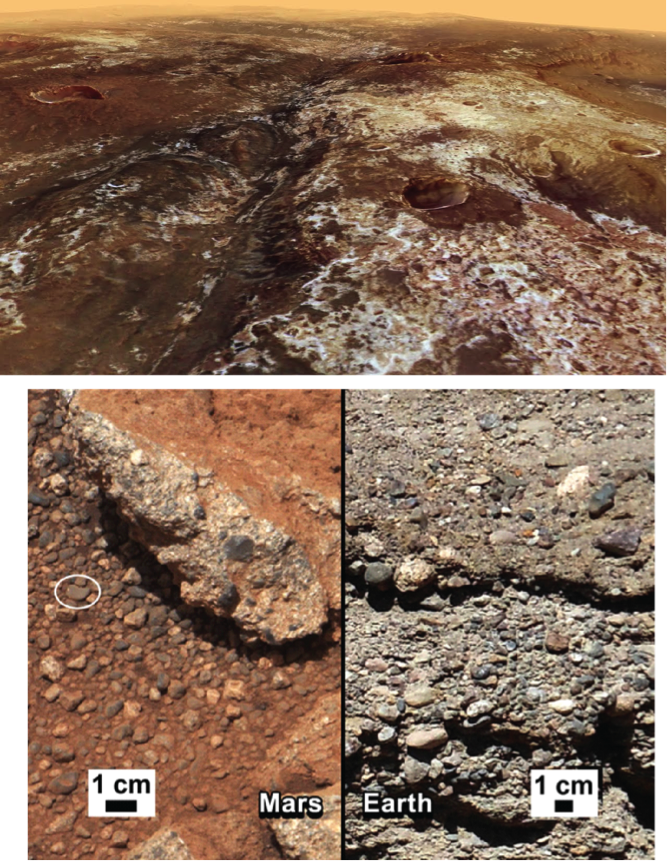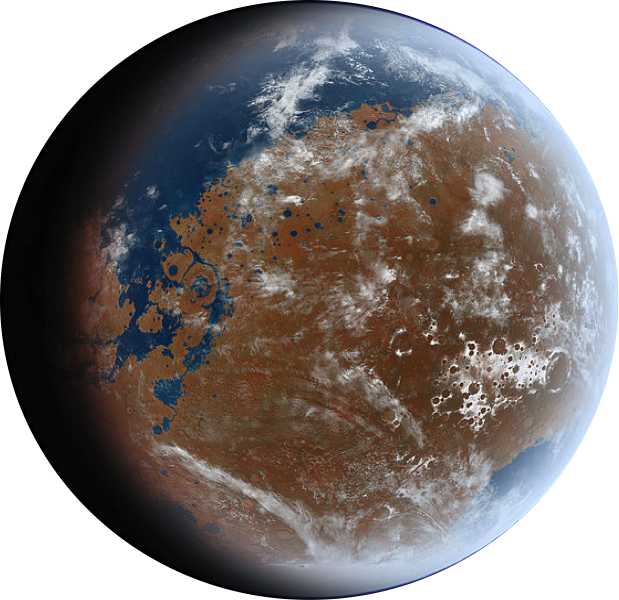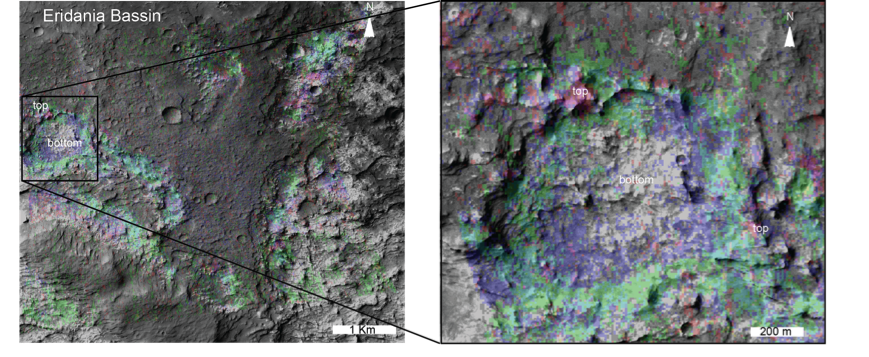Although extremely dry and cold today, Mars bears the mark of the past presence of liquid water on its surface. Various channels, valleys, lakes, and even pebble conglomerates that form only by the action of liquid water have been found on Mars. Also commonly found on the red planet are rocks of which the composition has been modified by interaction with liquid water. Each of these lines of evidence point towards a wetter and warmer planet at least until 3.7 billion years ago; a period when life started to be present on Earth. So yes, there really was liquid water on Mars in the past!

Debate still remains in the Martian community: how was it even possible?
Indeed, today’s conditions for water to be liquid on the Martian surface are not met. One possibility that would change the surface conditions is a thicker and denser atmosphere with a lot of CO2 (around 1 bar) and possibly other greenhouse gases. If such an atmosphere once existed on Mars, a special mineral type – a carbonate – should form at the planet’s surface. But, so far, most of the carbonates found on Mars were most likely formed by groundwater circulation with little to no contact with the atmosphere.

The search continued for carbonates that formed in contact with surface water in the earliest period of Mars history. One of the largest doubts remaining is the presence of a sufficient amount of CO2 in Mars’ atmosphere. With an increased proportion of atmospheric CO2, it is possible that the planet was warm enough to keep the water in a liquid form. But without a critical piece of the puzzle – i.e. the carbonates that formed at the surface – it is difficult to imagine a planet that was continuously warm and wet. To explain this apparent controversy, alternatives have been suggested: the planet was globally cold and icy with a short episode of a warm and wet climate due to giant impact, or a brutal change of atmosphere composition occurred due to methane releases, etc. Yet, all of these scenarios require the presence of a thicker and denser CO2-rich atmosphere during the warm peaks regardless of their cause, and all scenarios imply the formation of carbonates in the surface.
The “missing carbonates” became an enigma for the community working on the past climate of Mars.
The best chance of detecting surface carbonates is to therefore focus the search where they would have formed – such as lakes. When powerful satellite instruments (such as TES, OMEGA or CRISM) capable to investigate the composition of Mars were available to scientists, they focused on these past locations of large standing bodies of water. These initial searches were all unlucky. But, since 2010s, weathering profiles started to be documented on the surface of Mars. Weathering profiles are vertical assemblages of horizontal layers (or horizons) which range from a few centimeters to near a hundred meters. On Earth, weathering profiles are formed by the percolation of liquid water during rain showers, and they are mostly composed of clays. If Mars did have a thicker and denser CO2-rich atmosphere, then carbonates should also be present within these weathering profiles at the surface. While most previous searches for carbonates focused on finding pure carbonates, Bultel and coworkers decided to focus on those weathering profiles and tried to detect carbonates present in mixtures with clays.

After analyzing more than one hundred of weathering profiles, all scattered around the planet, they concluded that all of them constituted a similar sequence of horizontal layers with different mixtures of clays and carbonates. The observed sequence was then compared with numerical models and laboratory experiments. Bultel and colleagues concluded that the weathering profiles formed when it rained during a more humid, warmer and CO2-rich atmosphere than today’s Mars possesses. These carbonates represent a new clue to understand the past climate of Mars. Unfortunately, to know precisely how much CO2 was there, or for how long the conditions were suitable for liquid water, we must wait for more analyses only possible directly at the surface of Mars (in situ). The next clue is probably collected when rovers will study one of these weathering profiles. The future ExoMars rover mission will land close to such an environment and may bring an additional piece to the puzzle, so stay tuned!
Bultel, B., Viennet, J. C., Poulet, F., Carter, J., & Werner, S. C. (2019). Detection of carbonates in martian weathering profiles. Journal of Geophysical Research: Planets. https://doi.org/10.1029/2018JE005845
Corresponding author contact: benjamin.bultel@geo.uio.no
This study is supported by the Research Council of Norway in form of the 235058/F20 CRATER CLOCK project, and through its Centers of Excellence funding scheme, project number 223272. This project has received funding from the European Union’s Horizon 2020 (H2020-COMPET-2015) research and innovation program under the grant agreement No 687302 (PTAL).





